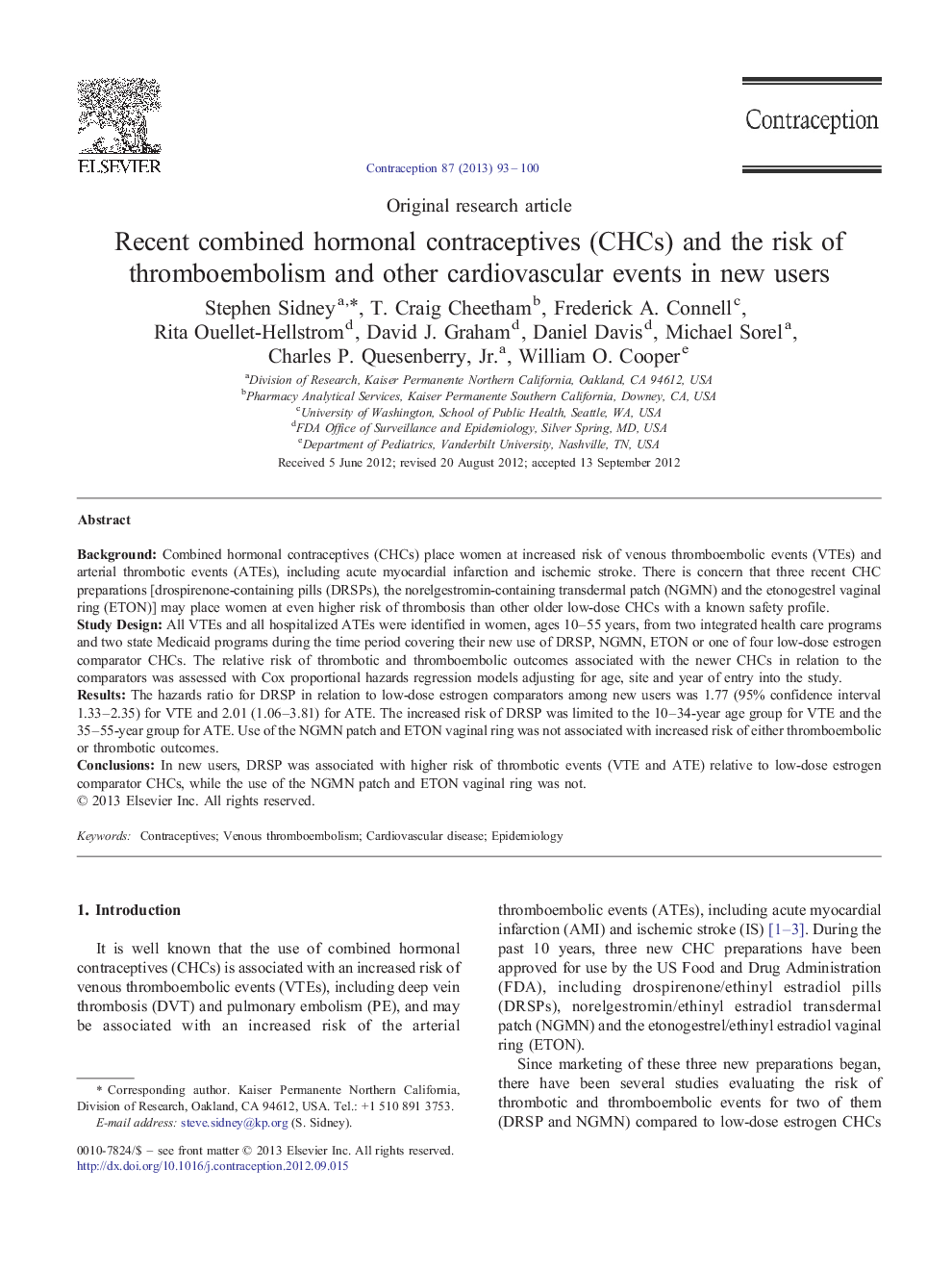| Article ID | Journal | Published Year | Pages | File Type |
|---|---|---|---|---|
| 3913807 | Contraception | 2013 | 8 Pages |
BackgroundCombined hormonal contraceptives (CHCs) place women at increased risk of venous thromboembolic events (VTEs) and arterial thrombotic events (ATEs), including acute myocardial infarction and ischemic stroke. There is concern that three recent CHC preparations [drospirenone-containing pills (DRSPs), the norelgestromin-containing transdermal patch (NGMN) and the etonogestrel vaginal ring (ETON)] may place women at even higher risk of thrombosis than other older low-dose CHCs with a known safety profile.Study DesignAll VTEs and all hospitalized ATEs were identified in women, ages 10–55 years, from two integrated health care programs and two state Medicaid programs during the time period covering their new use of DRSP, NGMN, ETON or one of four low-dose estrogen comparator CHCs. The relative risk of thrombotic and thromboembolic outcomes associated with the newer CHCs in relation to the comparators was assessed with Cox proportional hazards regression models adjusting for age, site and year of entry into the study.ResultsThe hazards ratio for DRSP in relation to low-dose estrogen comparators among new users was 1.77 (95% confidence interval 1.33–2.35) for VTE and 2.01 (1.06–3.81) for ATE. The increased risk of DRSP was limited to the 10–34-year age group for VTE and the 35–55-year group for ATE. Use of the NGMN patch and ETON vaginal ring was not associated with increased risk of either thromboembolic or thrombotic outcomes.ConclusionsIn new users, DRSP was associated with higher risk of thrombotic events (VTE and ATE) relative to low-dose estrogen comparator CHCs, while the use of the NGMN patch and ETON vaginal ring was not.
